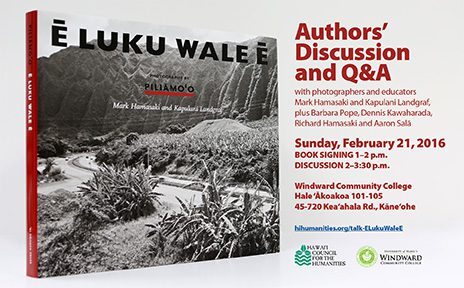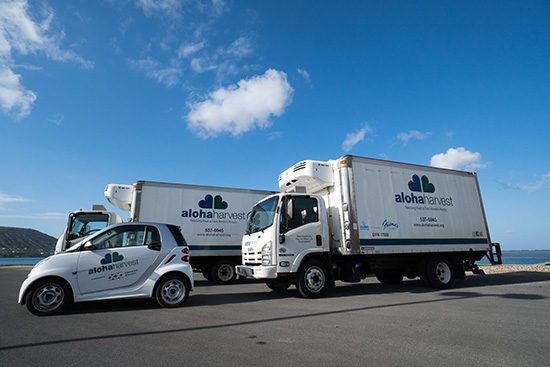
Nearly 20 years after one of Hawaiʻi’s largest and most controversial projects of its time opened, WCC art professor and humanities chair Mark Hamasaki and co-author Kapulani Landgraf released their new book, Ē Luku Wale Ē, this month documenting through photographs the final stages of construction of the H-3 freeway.
Gaining access to the construction site was far from easy but “it was a commitment,” Hamasaki said. “They (Department of Transportation or DOT) definitely didn’t want us up there.”
After the DOT refused to give permission, Hamasaki and Landgraf tried each of the contractors. Once granted access by the head contractor, the DOT tried to stop them but couldn’t.
Using large-format film cameras mounted on heavy tripods, Hamasaki and Landgraf spent almost eight years in the field taking close to 1,000 photographs.
According to the book, the two trekked through torrential rain, knee-deep mud, and steep, slippery hills to capture the images.
The book is filled with 125 carefully selected photographs accompanied by an 11-verse kanikau (mourning chant) written by Landgraf.
The H-3 is a 16-mile freeway connecting Joint Base Pearl Harbor-Hickam to the Marine Corps Base Hawaiʻi in Kāneʻohe Bay on the east side of the island. The $1.3 billion project began construction in 1972 on both sides of the Koʻolau mountain range and was completed in 1997.
During this period, other development projects also threatened the Waiāhole and Waikāne communities. Native Hawaiian groups, environmental activists and residents successfully stopped plans to build a golf course.
“They felt empowered, like our voices do make a difference,” Hamasaki said.
During construction of the H-3, the freeway drew more protest and opposition than any other project in the islands before it or since, according to the book.
Some photographs in the book depict signs of archeological work conducted that uncovered remains of walls and ʻauwai (irrigation channels) built with uncut stone by Native Hawaiians. The path set for the H-3 meant that dozens of Native Hawaiian sites were destroyed.
One of the most significant sites ravaged during the construction was Kukuiokāne (kukui trees of Kāne). The heiau was dedicated to the Hawaiian deity Kāne, the god of life-giving water and farming. According to Hamasaki, Kukuiokāne is the most sacred heiau in Kāneohe.
When talking about the purpose of the book, Hamasaki said, “It’s not a feel good book, it’s a book to make you think, make you feel.” He continued, “Look at what we’ve done, do you want to continue down this road?”
According to a 1997 article in the Honolulu Star-Bulletin, Haunani-Kay Trask, director of the Center for Hawaiian Studies at the University of Hawaiʻi at Mānoa, said the H-3 highlights a long list of reminders that Hawaiians need a sovereign entity of equal legal standing with the U.S. government.
“Because struggle after struggle, we protest, we talk about sacred sites, we talk about the destruction of the land at whatever development that we’re protesting will cause, and then we lose,” she said.
Years of study, litigation, protest and resistance extended the completion of the freeway over three decades. But efforts to stop it were unsuccessful.
Native Hawaiians continue to make their voices heard today, especially surrounding similar issues like the Honolulu Rail Transit Project and the Thirty Meter Telescope.
Hamasaki said he hopes the book will show people how politics and power work in Hawaiʻi. “It’s like a handbook for people of how to do things right,” he said
Ē Luku Wale Ē is for sale at Nā Mea Hawaiʻi bookstore or its website nameahawaii.com. It can also be found in the WCC library.
By Ka‘ainoa Fernandez, Ka ‘Ohana Staff Reporter





